Solution For Your Smile!
Porcelain Fused to Metal Crowns
Reasons to Crown a Tooth
Crowns are fitted over the teeth for a number of reasons. Crowns can restore the regular functions of a tooth, like biting and chewing, and can also be fitted for cosmetic reasons, improving the form and appearance of the tooth. A bridge spans space where one or more teeth have been lost. The teeth on either side of the space are crowned.
Just like the hard bones of the body, teeth can crack and break. The cusps, or raised areas of molars can break and chip with regular chewing and biting motions. These fractures create vulnerabilities within the tooth and must be protected from oral bacteria that can lead to decay and infection. A tooth may be weak for other reasons, and crowns can provide a strong outer covering that is superior the natural composition of the tooth. In some cases, a broken tooth may be worn or missing much of its regular size and shape, and can benefit from being crowned.

Today, we have many options for materials to crown a tooth. Each of these materials has some advantages and disadvantages. We will be happy to help you choose the best material that fits your needs.
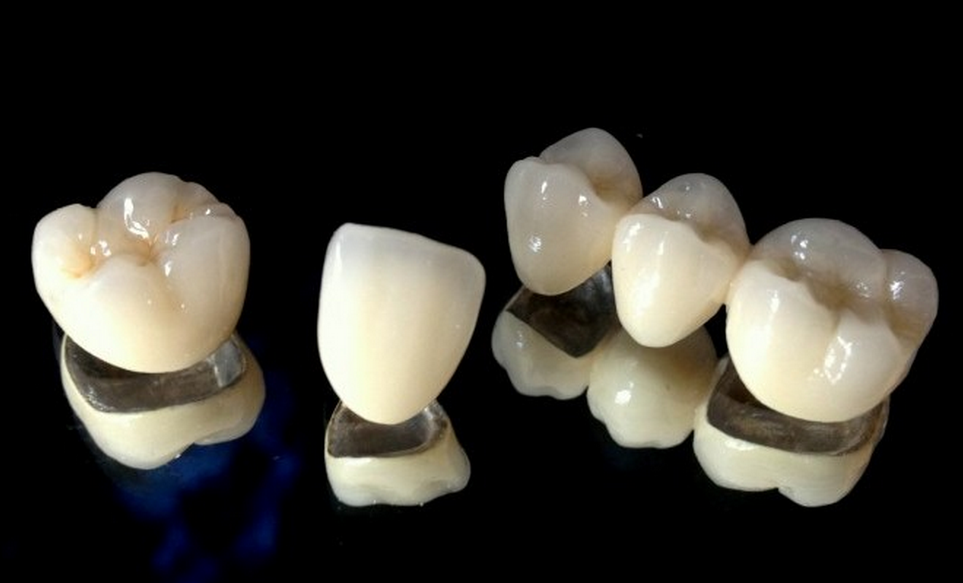
Porcelain-fused-to-metal (PFM) reconstructions have been used widely in dentistry until today. PFM restorations have a metal shell on which porcelain is fused in a special high temperature oven.
Ideal For You!
Porcelain Fused to Metal Crowns
Creating the same natural look with PFM crowns is far more difficult because we must disguise the gray metal substructure beneath the porcelain. Since a layer of very opaque porcelain must be used to mask the metal, the space used for that layer minimizes how thick the outermost translucent layer of porcelain can be. However, a natural appearance can be achieved with PFM crowns if more of the natural tooth structure can be reduced.
Another common aesthetic concern with PFM crowns is the dark line that is sometimes seen near the gumline. This dark line occurs if the gums begin to recede or if the tissue hugging the neck of the tooth is thin and translucent. In general, all-porcelain crowns are the best option for restoring teeth in the smile zone. On the other hand, PFM crowns or porcelain fused Zirconia(PFZ) crowns or monolithic Zirconia crowns are, generally, ideal for posterior teeth.
Solution For Your Smile!
Porcelain Fused to Zirconia Crowns
Porcelain fused to zirconia (PFZ) crowns and bridges can serve as a CAD/CAM alternative to the traditional porcelain fused to metal (PFM) restorations. In our clinic, we offer PFZ crowns and bridges as one of the options for fixed prosthetics. When porcelain is layered over zirconia substructure, you get a very strong prosthetic with lifelike translucency. The strength is equal to, if not stronger than, the metal substructure of standard porcelain fused to metal type crowns. These durable and attractive bridges and crowns are suitable for both anterior and posterior restorations.
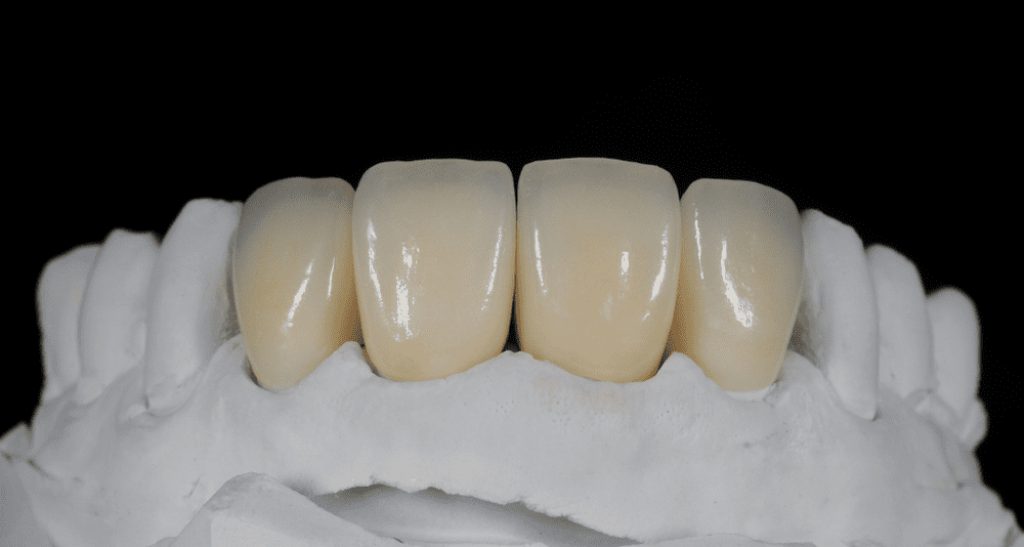
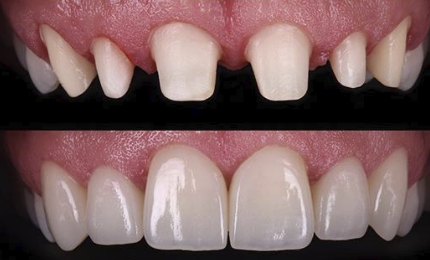
Today full ceramic crowns are considered the most beautiful crown that a tooth can get. Full porcelain/ ceramic is the only crown that gives the desired translucent look to the tooth
Ideal For You!
Full Ceramics
The metallic contrast of a dark metal dental crown certainly stands out in a crowd, but it may not be the kind of attention you want. Even porcelain-coated metal crowns have an unavoidable thin sliver of grey that gives them away where the crown connects the gum line. Full porcelain crowns are created to avoid detection, and they are also custom sculpted to fit your mouth, and match the color and tone of your natural teeth perfectly. The result is a beautiful lifelike crown that blends in to enhance your smile naturally. With its similarities to the natural enamel of a tooth, porcelain is the ideal material to bond with your tooth when placing a crown. This makes porcelain dental crowns the perfect choice for patients with teeth that are not missing entirely but are broken or discolored or otherwise damaged from injury or tooth decay. Porcelain reinforces and straightens your underlying natural tooth, making it the ideal choice adding true function along with its esthetic appearance.
Solution For Your Smile!
Teeth Whitening
Teeth whitening done in a professional dental setting is a safe, effective way to brighten your smile. It’s also perhaps the most economical cosmetic dental procedure. Depending on the whitening method you choose, results can be dramatic: in-office whitening, for example, can lighten teeth up to 6 shades in a single hour.
Professionally supervised whitening will work faster, and protect sensitive gums and tooth-root surfaces better, than over-the-counter whitening products. Having an oral exam before you begin any whitening process is an important first step, as we want to make sure your tooth discoloration is not the result of a dental condition in need of treatment. We also want you to be aware that it can be risky to have whitening solutions applied to your teeth by untrained personnel in shopping malls. If you have any questions about which whitening method would be best for you, we would be happy to answer them.
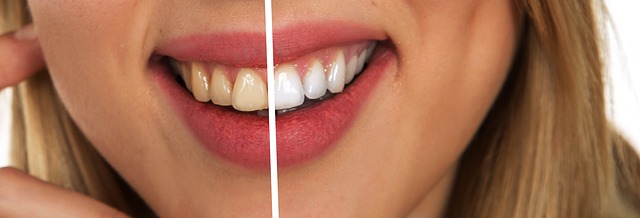
Professional Whitening Methods
Professional whitening makes use of high-concentration bleaching gels that are not available over the counter
In-Office Laser Whitening
This technique offers the fastest results with the most powerful whitening solutions available. First, we will cover your gums and tooth-root surfaces with a protective barrier to ensure your safety. A thin plastic device known as a retractor will hold your lips and cheeks away from your teeth as we apply a laser stimulated hydrogen peroxide gel, which we will leave on for about an hour. When we remove the gel, the results will be obvious immediately.
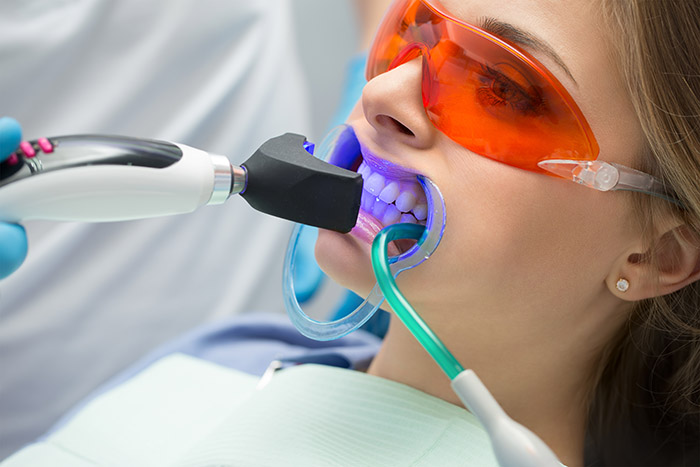
Take-Home Whitening
This is another effective way to whiten your teeth, though you will play a greater role in ensuring the best possible results and several days may be needed to achieve your desired level of whiteness. First, we will take a mold of your teeth and then have two thin, flexible plastic mouth trays custom-made for you – one for the top teeth and one for the bottom. You will fill the trays with whitening gel and then position the trays over your teeth. The trays are left in usually for about four hours at a time.
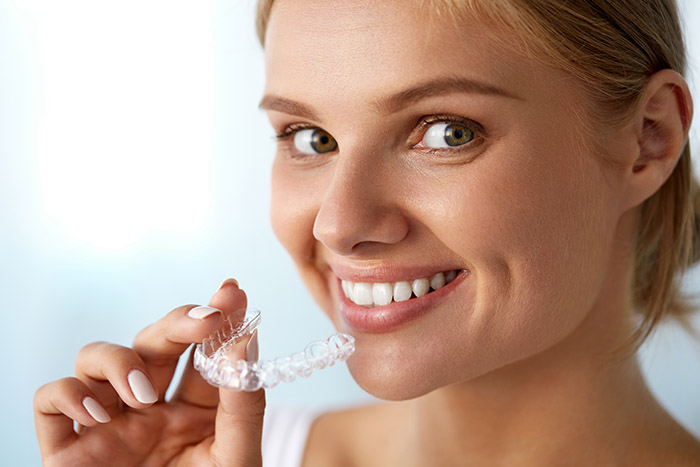
Caring for Your Whitened Smile
There are lots of things you can do to make sure your whitening results last as long as possible, and this will vary from person to person (six months to two years or even longer). First of all, please maintain your usual, conscientious routine of brushing and flossing every day, and keep up with your regular schedule of professional cleanings here at the dental office. Avoid foods and beverages that stain, including red wine, tea and coffee. If you smoke, use your newly whitened teeth as an impetus to quit – a good idea in any event! A minor touch-up every so often, either at home or here at the dental office, can keep your smile bright and beautiful for years.
Solution For Your Smile!
Dental Veneers
Dental veneers (sometimes called porcelain veneers or dental porcelain laminates) are wafer-thin, custom-made shells of tooth-colored materials designed to cover the front surface of teeth to improve your appearance. These shells are bonded to the front of the teeth changing their color, shape, size, or length.
Dental veneers can be made from porcelain or from resin composite materials. Porcelain veneers resist stains better than resin veneers and better mimic the light reflecting properties of natural teeth. You will need to discuss the best choice of veneer material for you with your dentist. To prepare a tooth for a veneer, your dentist will remove about 0.5 millimeter of enamel from the tooth’s front surface, which is an amount nearly equal to the thickness of the veneer to be added to the tooth surface.
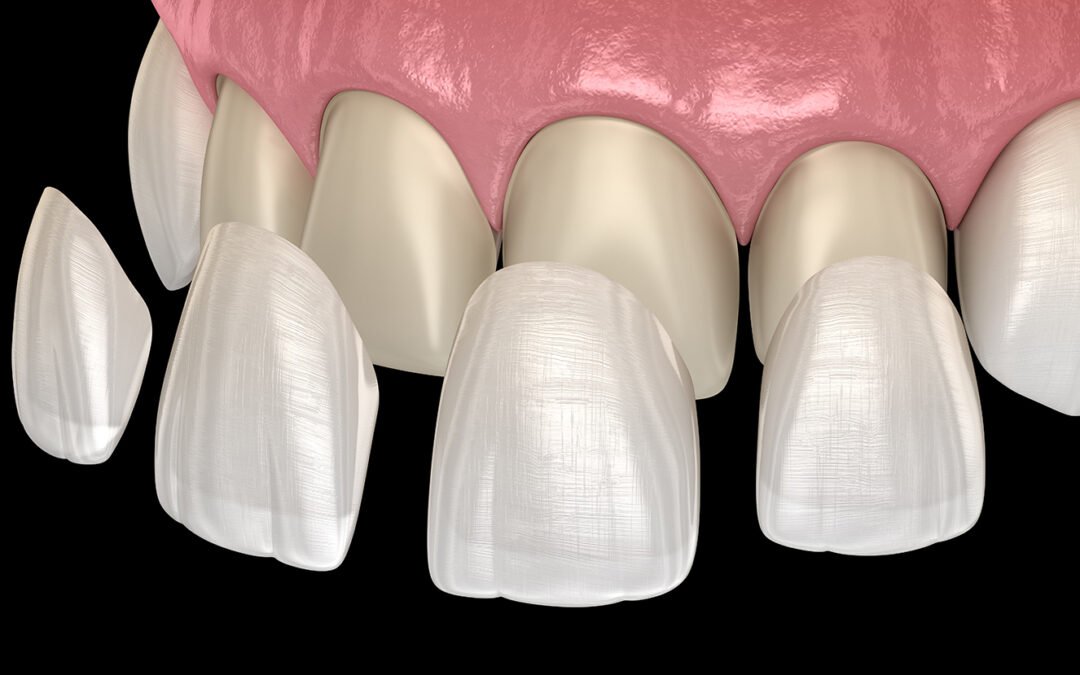
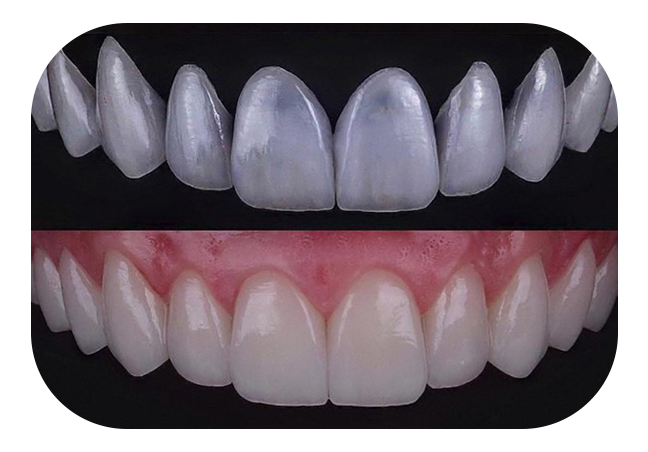
What Types of Problems Do Dental Veneers Fix?
Veneers are routinely used to fix:
